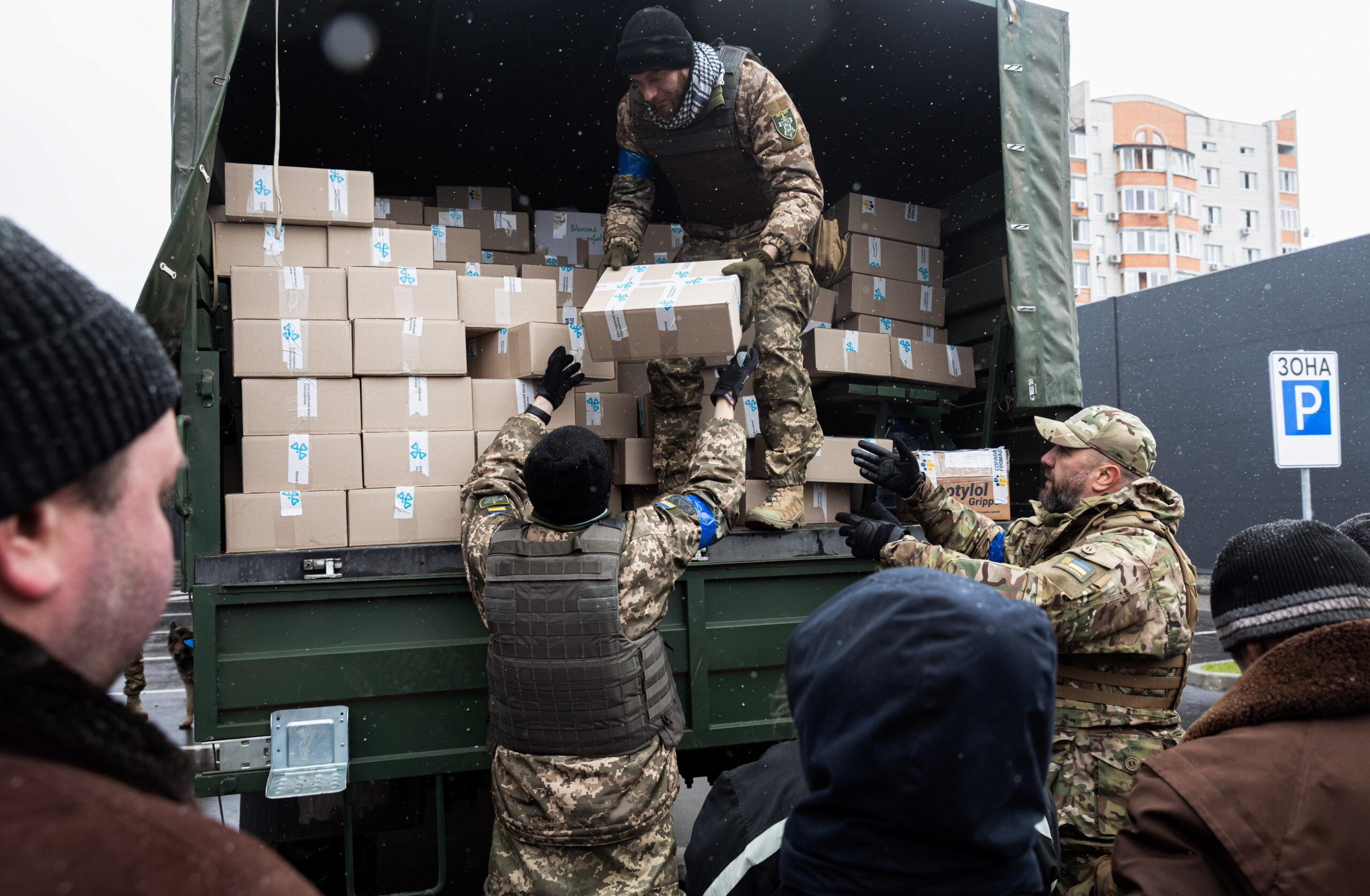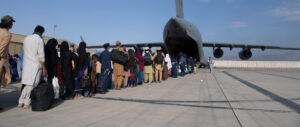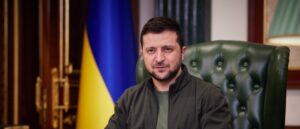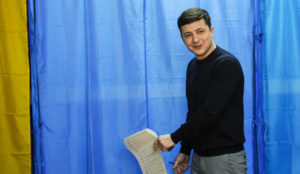
Afghanistan taught us that a firehose of unaccountable aid can destroy a country’s democratic future. In Ukraine, we are making the same mistake all over again.
By Jennifer Brick Murtazashvili and Nataliia Shapoval
August 2022
O
ne year ago, on August 15, the Afghan republic fell to the Taliban. This debacle might have been avoided had the international community made different choices during the preceding two decades—particularly about the huge sums of foreign aid flowing into the country. Many failures came together to cause Afghanistan’s swift collapse after the U.S. withdrawal, but a central and longstanding lesson from this catastrophe must be that well-intentioned donor largess can foster corruption, undermine institutions, and threaten stability in fragile states and budding democracies.
Today, faced with another tragedy—the war in Ukraine—the United States and its European partners have an opportunity to take the lesson from Afghanistan and do things differently. Yet by already pouring vast amounts of aid into Ukraine, now the world’s biggest recipient of foreign assistance, with minimal supervision, the international community seems poised to repeat its earlier mistakes. Ukraine needs military, economic, and humanitarian assistance to have any hope of winning the war. But the price of victory should not be the country’s democratic future.
Since Ukraine’s Revolution of Dignity in 2014, the country has made important strides in strengthening its democracy and bolstering civic participation, with notable public-sector reforms to enhance accountability and stop corruption. First, Ukraine overhauled its public-procurement system to join together business, government, and civil society in ensuring open access to public tenders. This system is one of the most innovative in the world. Second, Ukraine decentralized government authority. Devolving power to local governments has generated more local revenue, increased infrastructure spending, and given citizens a greater say in resource allocation and oversight. These achievements, in turn, have generated pride in local governments and local authorities. The scale of aid now flowing into Ukraine, however, could undermine these impressive reforms.
Scholars have long pointed out the dangers of rentier dynamics, in which income generated from foreign aid, natural resources, or other unproductive sources severs lines of accountability between citizens and government. This happens because rulers who can rely on aid more than on citizens to finance public goods and services have little incentive to work with the people. This problem is not specific to Ukraine; it can be found all over the world. In Afghanistan after 2001, the combination of development assistance and military aid made citizens the subjects of donors—whom they could not hold accountable—rather than of their own government.
A Blessing and a Curse
Without meaningful oversight of the aid pouring into Ukraine, the United States and its partners risk reversing the country’s progress in fighting corruption and building a more legitimate government. Right after the war began, the U.S. Congress approved US$12 billion in emergency assistance to Ukraine. Then in May, President Joe Biden signed a bill for another $40 billion. About $31 billion of the total amount is budgeted for traditional foreign aid (economic support, grants and loans, military assistance, and food and healthcare aid), while $20 billion is for weapons, military supplies, and support for U.S. military deployments to the region. By comparison, Afghanistan (the biggest recipient of U.S. aid until last year) received roughly $16 billion annually at the height of U.S. involvement in 2011. In a matter of months, the United States has allocated double that amount to Ukraine.
Without careful planning and strong oversight, any good that foreign assistance might do will be outweighed and undone by the bad. Not only does aid often encourage corruption, but, as we learned from Afghanistan, it often undermines local institutions. Before the Taliban assault last year, heavily centralized political structures, together with heavily centralized development planning, had left the Afghan people with no voice in decision-making. After suffering decades of corruption with no power to address it or other problems, many Afghans saw little to fight for when the Taliban arrived.
So far, analysts and program planners seem not to be heeding this lesson. As soon as the aid started to flow, they began crafting ways to help Ukraine “build back better.” This kind of thinking is dangerous. Ukrainians have their own, very clear, ideas about how to reshape their future. Donors in distant capitals should therefore set aside their grand visions for the country and focus on helping Ukrainians survive. Utopianism has long permeated donor thinking about recipient countries undergoing postconflict reconstruction—always at great cost. Rather than repeat this mistake, the international donor community should be guided by Ukrainians themselves and help Ukrainian authorities to deliver on their promises to the people.
In order to avoid slowing or stopping Ukraine’s momentum on reform, the United States must work with local institutions rather than creating parallel structures to deliver aid, as it did in Afghanistan. In (post)conflict environments, mammoth aid contractors are better resourced than local governments and can hire the best personnel because they pay salaries far above local rates. This is precisely the kind of rentier effect that guts the public sector. Furthermore, foreign contractors and NGOs will have more resources available for reconstruction than will cash-strapped local governments. But local authorities are subject to constraints on decision-making that make them more accountable to citizens. Well-intentioned donors often bulldoze such accountability measures in their desire to act quickly.
So what should donors do to support postconflict reconstruction efforts? First, they should provide direct budget support to the Ukrainian government. Ukraine no longer has the capacity to print money. Thus if it does not receive funds soon, it will face a balance-of-payments crisis. It also has unsustainable levels of debt with extremely high interest rates. Ukraine’s central and local governments and central bank have remained fully operational during the war, keeping the macro-financial situation stable and continuing to provide public services. With the stronger accountability mechanisms that Ukraine has put in place over the past several years, these bodies are capable of managing donor funds.
Second, donors should work directly with local governments, nonprofit organizations, and businesses to implement reconstruction projects rather than relying on expensive foreign contractors. Local governments are up to the task, as their leadership during the war has proven. In western regions of Ukraine, for example, local leaders organized their communities to host refugees and internally displaced people, arranged logistical support to help families, and welcomed businesses forced to relocate from eastern Ukraine. It is essential that local governments not lose their decision-making power either to donors or to the central government in Kyiv.
Under current rules, local businesses and governments must compete with large U.S. firms for reconstruction funds, putting these entities at a severe disadvantage. The behemoth U.S. contractors will inevitably win and then enter the host country with budgets that dwarf those of local authorities. As we know from Afghanistan and elsewhere, this is an unsustainable model that generally denies local authorities a say in how donors distribute funds and, as a result, undermines the legitimacy of local government.
Finally, it is imperative that the United States and other donors establish oversight mechanisms to hold donors accountable for fraud and corruption. The United States should appoint a Special Inspector General for Ukraine Reconstruction, modeled on the Special Inspector General for Afghanistan Reconstruction (SIGAR). For the last decade, SIGAR has been led by John Sopko, who became one of the most hated men in Washington because of his relentless quest to stop corruption and fraud committed by U.S. agencies in Afghanistan. Only a similar independent government body will be able to hold U.S. actors accountable for the wasteful projects and boondoggles that will inevitably be foisted on Ukraine. Of course, this agency must hold Ukrainians accountable as well.
What will happen if the United States and other donor countries ignore the lessons from Afghanistan? We can easily imagine a bungled war and reconstruction effort that dumps billions of dollars into Ukraine with little oversight. This would be disastrous for Ukraine’s anticorruption efforts and, more broadly, for the country’s democratic fortunes. It would be a tragedy indeed to see the clock turned back in Ukraine and the sins of the donors wrongly blamed on the Ukrainian people and government after they so valiantly defended their country against the Russian Goliath.
Jennifer Brick Murtazashvili is director of the Center for Governance and Markets and associate professor of international affairs at the University of Pittsburgh. Nataliia Shapoval is chair of the Policy Institute and vice president for policy research at the Kyiv School of Economics.
More from the Journal of Democracy:
 |
 |
 |
|
The Collapse of Afghanistan |
How Zelensky Has Changed Ukraine |
The Rise of an “Outsider” President By Joanna Rohozinska and Vitaliy Shpak |
Copyright © 2022 National Endowment for Democracy
Image Credit: Mykhaylo Palinchak/SOPA Images/LightRocket via Getty Images
